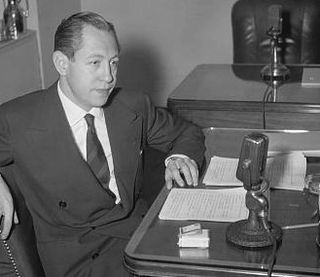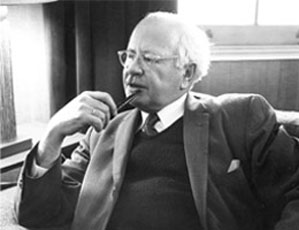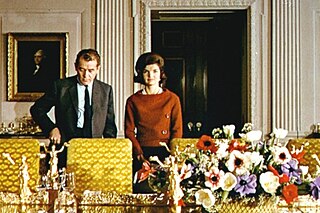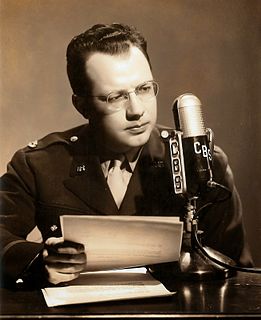
Edward Roscoe Murrow was an American broadcast journalist and war correspondent. He first gained prominence during World War II with a series of live radio broadcasts from Europe for the news division of CBS. During the war he recruited and worked closely with a team of war correspondents who came to be known as the Murrow Boys.
CBS News is the news division of the American television and radio service CBS. CBS News television programs include the CBS Evening News, CBS Mornings, news magazine programs CBS News Sunday Morning, 60 Minutes, and 48 Hours, and Sunday morning political affairs program Face the Nation. CBS News Radio produces hourly newscasts for hundreds of radio stations, and also oversees CBS News podcasts like The Takeout Podcast. CBS News also operates a 24-hour digital news network.

William Samuel Paley was an American businessman, primarily involved in the media, and best known as the chief executive who built the Columbia Broadcasting System (CBS) from a small radio network into one of the foremost radio and television network operations in the United States.

A terrestrial network is a group of radio stations, television stations, or other electronic media outlets, that form an agreement to air, or broadcast, content from a centralized source. For example, ABC (U.S.), CBC/Radio-Canada (Canada), the BBC (UK), the ABC (Australia), DW (Germany), KBS, and NHK (Japan) are TV networks that provide programming for local terrestrial television station affiliates to air using signals that can be picked up by the home television sets of local viewers. Networks generally, but not always, operate on a national scale; that is, they cover an entire country.
The year 1940 saw a number of significant events in radio broadcasting history.

Arnold Eric Sevareid was an American author and CBS news journalist from 1939 to 1977. He was one of a group of elite war correspondents who were hired by CBS newsman Edward R. Murrow and nicknamed "Murrow's Boys." Sevareid was the first to report the Fall of Paris in 1940, when the city was captured by German forces during World War II.

William Lawrence Shirer was an American journalist and war correspondent. He wrote The Rise and Fall of the Third Reich, a history of Nazi Germany that has been read by many and cited in scholarly works for more than 50 years. Originally a foreign correspondent for the Chicago Tribune and the International News Service, Shirer was the first reporter hired by Edward R. Murrow for what became a CBS radio team of journalists known as "Murrow's Boys". He became known for his broadcasts from Berlin, from the rise of the Nazi dictatorship through the first year of World War II (1939–1940). With Murrow, he organized the first broadcast world news roundup, a format still followed by news broadcasts.

Charles Collingwood was an American journalist and war correspondent. He was an early member of Edward R. Murrow's group of foreign correspondents that was known as the "Murrow Boys". During World War II he covered Europe and North Africa for CBS News. Collingwood was also among the early ranks of television journalists who included Walter Cronkite, Eric Sevareid, and Murrow himself.

Robert Trout was an American broadcast news reporter who worked on radio before and during World War II for CBS News. He was regarded by some as the "Iron Man of Radio" for his ability to ad lib while on the air, as well as for his stamina, composure, and elocution.
This I Believe was originally a five-minute program, originally hosted by journalist Edward R. Murrow from 1951 to 1955 on CBS Radio Network. The show encouraged both famous and everyday people to write short essays about their own personal motivation in life and then read them on the air. This I Believe became a cultural phenomenon that stressed individual belief rather than religious dogma. Its popularity both developed and waned within the era of U.S. Senator Joseph McCarthy and the Cold War.

The Murrow Boys, or Murrow's Boys, were the CBS radio broadcast journalists most closely associated with Edward R. Murrow during his time at the network, most notably in the years before and during World War II.
Robert Bowman was a broadcast journalist for the Canadian Broadcasting Corporation (CBC). He was the son of Charles A. Bowman, editor of the Ottawa Citizen newspaper, and a member of the Aird Commission that recommended Canada have a public broadcasting system.
Laurence Edward LeSueur was an American journalist and a war correspondent during World War II. He worked closely with Edward R. Murrow and was one of the original Murrow Boys.
Ned Calmer was a Chicago-born American journalist and writer. He was a long-time CBS News analyst and close associate of Edward R. Murrow.
The CBS World News Roundup is the longest-running network radio newscast in the United States. It airs weekday mornings and evenings on the CBS Radio Network.

William Randall Downs, Jr. was an American broadcast journalist and war correspondent. He worked for CBS News from 1942 to 1962 and for ABC News beginning in 1963. He was one of the original members of the team of war correspondents known as the Murrow Boys.

Paul Welrose White was an American journalist and news director who founded the Columbia Broadcasting System's news division in 1933 and directed it for 13 years. His leadership spanned World War II and earned a 1945 Peabody Award for CBS Radio. After his departure from CBS in 1946 he wrote a textbook on broadcast journalism, News on the Air (1947). Since 1956 the Radio Television Digital News Association has presented the Paul White Award for lifetime achievement as its highest honor.

The Hubbard School of Journalism and Mass Communication is a journalism school at the University of Minnesota that offers programs in journalism, strategic communication and mass communication. It is located on the Minneapolis campus. It houses around 800 undergraduates and more than 30 graduate students in a given academic year.

"The Night America Trembled" is a top-rated television dramatization of the public reaction to the 1938 radio broadcast of "The War of the Worlds" that aired September 9, 1957, as an episode of the CBS series Studio One. Hosted by Edward R. Murrow, the live documentary play was written by Nelson S. Bond, and uses excerpts of the radio script by Howard E. Koch.
This is a list of events from British radio in 1943.











